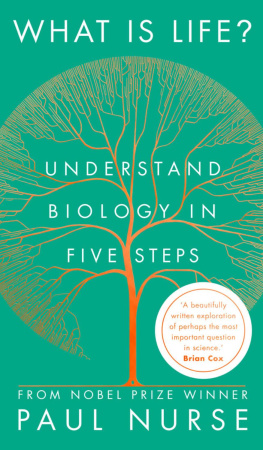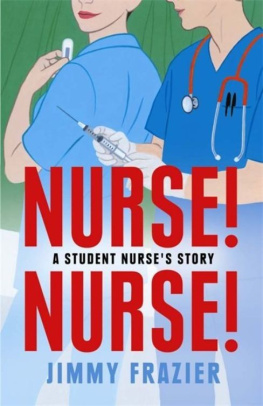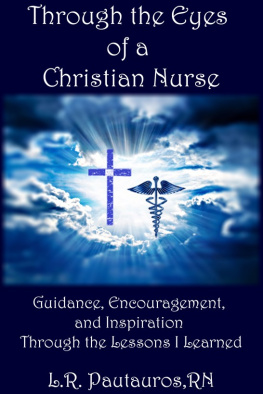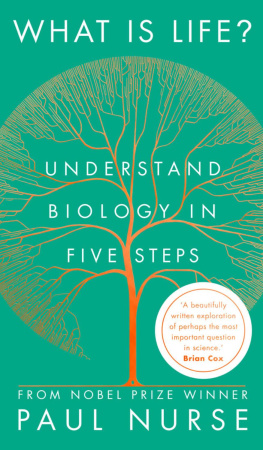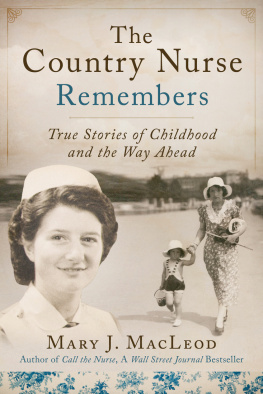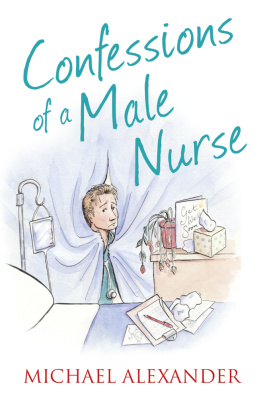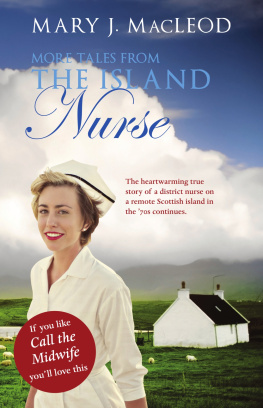Paul Nurse - What Is Life?
Here you can read online Paul Nurse - What Is Life? full text of the book (entire story) in english for free. Download pdf and epub, get meaning, cover and reviews about this ebook. year: 2020, publisher: David Fickling Books Ltd, genre: Religion. Description of the work, (preface) as well as reviews are available. Best literature library LitArk.com created for fans of good reading and offers a wide selection of genres:
Romance novel
Science fiction
Adventure
Detective
Science
History
Home and family
Prose
Art
Politics
Computer
Non-fiction
Religion
Business
Children
Humor
Choose a favorite category and find really read worthwhile books. Enjoy immersion in the world of imagination, feel the emotions of the characters or learn something new for yourself, make an fascinating discovery.
- Book:What Is Life?
- Author:
- Publisher:David Fickling Books Ltd
- Genre:
- Year:2020
- Rating:4 / 5
- Favourites:Add to favourites
- Your mark:
- 80
- 1
- 2
- 3
- 4
- 5
What Is Life?: summary, description and annotation
We offer to read an annotation, description, summary or preface (depends on what the author of the book "What Is Life?" wrote himself). If you haven't found the necessary information about the book — write in the comments, we will try to find it.
What Is Life? — read online for free the complete book (whole text) full work
Below is the text of the book, divided by pages. System saving the place of the last page read, allows you to conveniently read the book "What Is Life?" online for free, without having to search again every time where you left off. Put a bookmark, and you can go to the page where you finished reading at any time.
Font size:
Interval:
Bookmark:
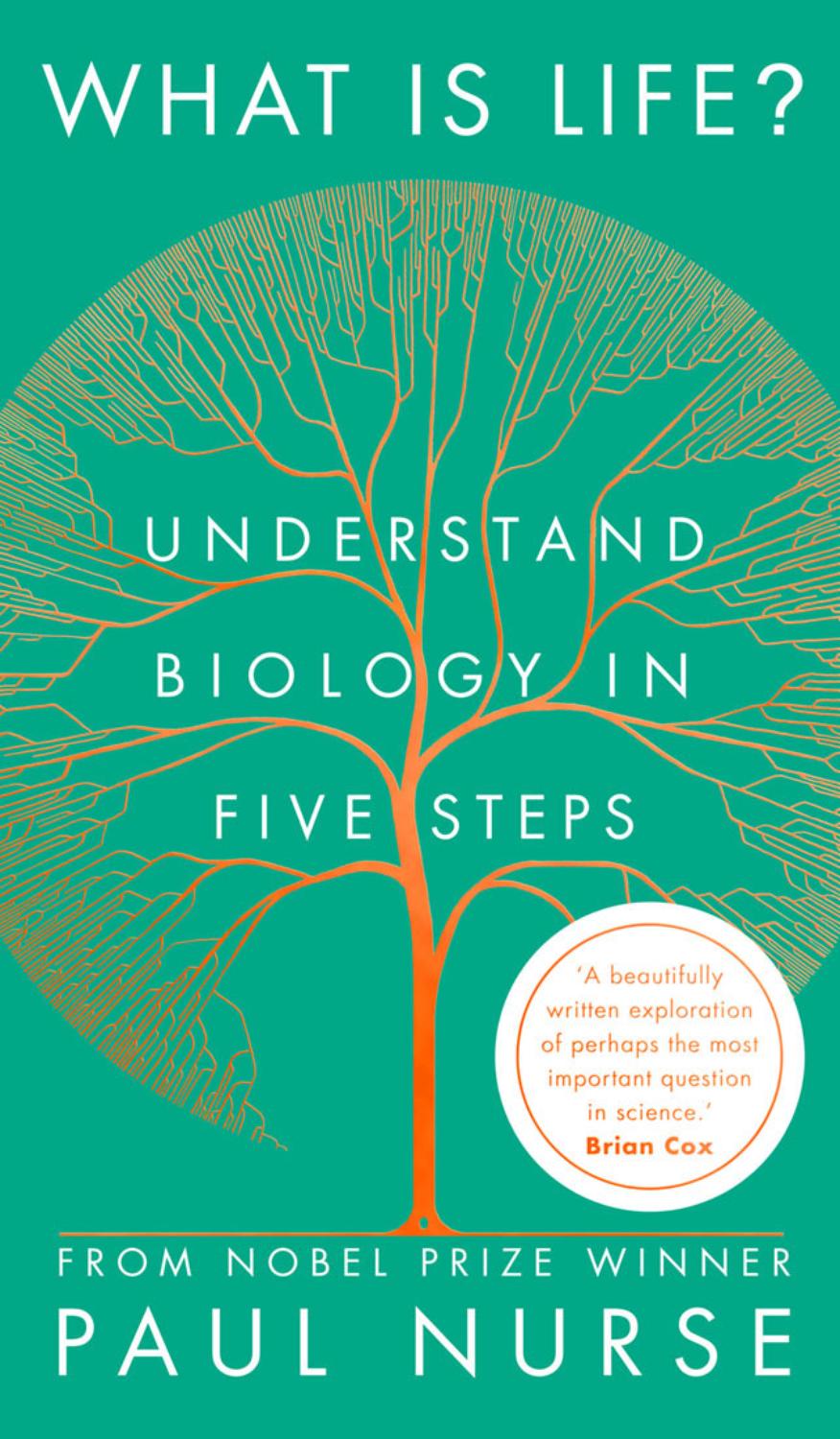
i A beautifully written exploration of perhaps the most important question in science. I felt I was being given rare access to a truly deep understanding of a complex and profound subject. This is the best introduction to modern biology Ive read.
Brian Cox
In this vibrant, lively book, Sir Paul Nurse, discoverer of some of the crucial genes that control the division of cells, takes a deep dive into biology by illuminating five of the essential characteristics of life. The writing is so spirited and knowledgeable and the five sections so full of wondrous revelations that I could not put it down. This is a book that will inspire a generation of biologists.
Siddhartha Mukherjee
A masterful overview of biology that draws together big ideas, luminous details and personal insights. You emerge with a more profound sense of wonder about the diversity, complexity and interconnectedness of living organisms. Its the biggest question in biology. And this book represents the best answer Ive ever seen. Paul Nurse is a rare life-form a Nobel-winning scientist and a brilliant communicator.
Alice Roberts
ii Paul Nurse is about as distinguished a scientist as there could be. He is also a great communicator. This book explains, in a way that is both clear and elegant, how the processes of life unfold, and does as much as science can to answer the question posed by the title. Its also profoundly important, at a time when the world is connected so closely that any new illness can sweep from nation to nation with immense speed, that all of us including politicians should be as well-informed as possible. This book provides the sort of clarity and understanding that could save many thousands of lives. I learned a great deal, and I enjoyed the process enormously.
Philip Pullman
Paul Nurse provides a concise, lucid response to an age-old question. His writing is not just informed by long experience, but also wise, visionary and personal. I read the book in one sitting, and felt exhilarated by the end, as though Id run for miles from the authors own garden into the interior of the cell, back in time to humankinds most distant ancestors, and through the laboratory of a dedicated scientist at work on what he most loves to do.
Dava Sobel

Life is all around us, abundant and diverse, it is extraordinary. But what does it actually mean to be alive?
Nobel prize-winner Paul Nurse has spent his career revealing how living cells work. In this book, he takes up the challenge of defining life in a way that every reader can understand. It is a shared journey of discovery; step by step he illuminates five great ideas that underpin biology. He traces the roots of his own curiosity and knowledge to reveal how science works, both now and in the past. Using his personal experiences, in and out of the lab, he shares with us the challenges, the lucky breaks, and the thrilling eureka moments of discovery.
To survive the challenges that face the human race today from climate change, to pandemics, loss of biodiversity and food security it is vital that we all understand what life is.

To Andy Martynoga (Yog), friend and father
and my grandchildren:
Zoe, Joseph, Owen and Joshua
and their generation
who will need to care for Life on our planet
- 1. The Cell
Biologys Atom - 2. The Gene
The Test of Time - 3. Evolution by Natural Selection
Chance and Necessity - 4. Life as Chemistry
Order from Chaos - 5. Life as Information
Working as a Whole
It may have been a butterfly that first started me thinking seriously about biology. It was early spring; I was perhaps twelve or thirteen years old and sitting in the garden when a quivering yellow butterfly flew over the fence. It turned, hovered and briefly settled just long enough for me to notice the elaborate veins and spots on its wings. Then a shadow disturbed it and it took flight again, disappearing over the opposite fence. That intricate, perfectly formed butterfly made me think. It was both utterly different to me and yet somehow familiar too. Like me, it was so obviously alive: it could move, it could sense, it could respond, it seemed so full of purpose. I found myself wondering: what does it really mean to be alive? In short, what is life?
I have been thinking about this question for much of my life, but finding a satisfactory answer is not easy. Perhaps surprisingly, there is no standard definition of life, although scientists have wrestled with this question across the ages. Even the title of this book, What is Life?, has been shamelessly stolen from a physicist, Erwin Schrdinger, who published an influential book of the same name in 1944. His main focus was on one important aspect of life: how living things maintained such impressive order and uniformity for generation after generation in a universe that is, according to the Second Law of Thermodynamics, constantly moving towards a state of disorder and chaos. Schrdinger quite rightly saw this as a big question, and he believed that understanding inheritance that is what genes are and how they are passed on faithfully between generations was key.
In this book I ask the same question What is life? but I do not think that only deciphering inheritance will give us a complete answer. Instead I will consider five of biologys great ideas, using them as steps that we can climb, one at a time, to get a clearer view of how life works. These ideas have mostly been around for some time, and are generally well accepted for explaining how living organisms function. But I will draw these different ideas together in new ways, and use them to develop a set of unifying principles that define life. Hopefully they will help you see the living world through fresh eyes.
I should say, right at the start, that we biologists often shy away from talking about great ideas and grand theories. In this respect we are rather different from physicists. We sometimes give the impression that we are more comfortable immersing ourselves in details, catalogues and descriptions, whether thats listing all the species in a particular habitat, counting the hairs on a beetles leg, or sequencing thousands of genes. Perhaps it is natures bewildering, even overwhelming, diversity that makes it seem hard to seek out simple theories and unifying ideas. But important overarching ideas of this kind do exist in biology, and they help us make sense of life in all its complexity.
The five ideas I will explain to you are: The Cell, The Gene, Evolution by Natural Selection, Life as Chemistry and Life as Information. As well as explaining where they came from, why they are important, and how they interact, I want to show you that they are still changing and being further developed today, as scientists all over the world make new discoveries. I also want to give you a taste of what its like to be engaged in scientific discovery, so I will introduce you to the scientists who made these advances, some of whom I knew personally. I will also tell you stories of my own experiences of doing research in the laboratory, the lab, including the hunches, the frustrations, the luck and the rare but wonderful moments of genuinely new insight. My aim is for you to share in the thrill of scientific discovery and to experience the satisfaction that comes through a growing understanding of the natural world.
Font size:
Interval:
Bookmark:
Similar books «What Is Life?»
Look at similar books to What Is Life?. We have selected literature similar in name and meaning in the hope of providing readers with more options to find new, interesting, not yet read works.
Discussion, reviews of the book What Is Life? and just readers' own opinions. Leave your comments, write what you think about the work, its meaning or the main characters. Specify what exactly you liked and what you didn't like, and why you think so.

